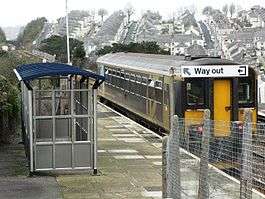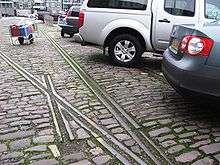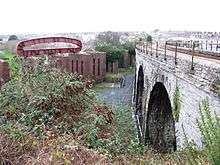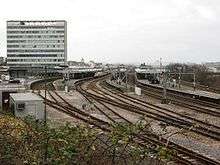Railways in Plymouth
| Railways in the Plymouth area | |||||||||||||||||||||||||||||||||||||||||||||||||||||||||||||||||||||||||||||||||||||||||||||||||||||||||||||||||||||||||||||||||||||||||||||||||||||||||||||||||||||||||||||||||||||||||||||||||||||||||||||||||||||||
|---|---|---|---|---|---|---|---|---|---|---|---|---|---|---|---|---|---|---|---|---|---|---|---|---|---|---|---|---|---|---|---|---|---|---|---|---|---|---|---|---|---|---|---|---|---|---|---|---|---|---|---|---|---|---|---|---|---|---|---|---|---|---|---|---|---|---|---|---|---|---|---|---|---|---|---|---|---|---|---|---|---|---|---|---|---|---|---|---|---|---|---|---|---|---|---|---|---|---|---|---|---|---|---|---|---|---|---|---|---|---|---|---|---|---|---|---|---|---|---|---|---|---|---|---|---|---|---|---|---|---|---|---|---|---|---|---|---|---|---|---|---|---|---|---|---|---|---|---|---|---|---|---|---|---|---|---|---|---|---|---|---|---|---|---|---|---|---|---|---|---|---|---|---|---|---|---|---|---|---|---|---|---|---|---|---|---|---|---|---|---|---|---|---|---|---|---|---|---|---|---|---|---|---|---|---|---|---|---|---|---|---|---|---|---|---|
Legend | |||||||||||||||||||||||||||||||||||||||||||||||||||||||||||||||||||||||||||||||||||||||||||||||||||||||||||||||||||||||||||||||||||||||||||||||||||||||||||||||||||||||||||||||||||||||||||||||||||||||||||||||||||||||
| |||||||||||||||||||||||||||||||||||||||||||||||||||||||||||||||||||||||||||||||||||||||||||||||||||||||||||||||||||||||||||||||||||||||||||||||||||||||||||||||||||||||||||||||||||||||||||||||||||||||||||||||||||||||
| |||||||||||||||||||||||||||||||||||||||||||||||||||||||||||||||||||||||||||||||||||||||||||||||||||||||||||||||||||||||||||||||||||||||||||||||||||||||||||||||||||||||||||||||||||||||||||||||||||||||||||||||||||||||
The network of railways in Plymouth, Devon, England, was developed by companies affiliated to two competing railways, the Great Western Railway and the London and South Western Railway.[1] At their height two main lines and three branch lines served 28 stations in the Plymouth area, but today just six stations remain in use.

History
The first uses of railway in the area were wooden rails used during the construction of docks facilities. Some were in use in the Naval Dockyard in 1724,[2] and in 1756 John Smeaton laid some more to help move materials in his workyard on the mainland which was preparing stonework for the Eddystone Lighthouse. In 1812 John Rennie laid a 3 ft 6 in (1.07 m) gauge metal tramway to help with the construction of the Plymouth Breakwater; rails were laid in the quarry at Oreston and on the breakwater, and loaded wagons were conveyed between the two on ships.[1]
A more conventional tramway was opened on 26 September 1823. The 4 ft 6 in (1.37 m) Plymouth and Dartmoor Railway ran from Princetown to Sutton Harbour and the Cattewater. Branches were opened to Cann Quarry in 1829 and to Plympton in 1834, followed by the Lee Moor Tramway in 1854. Haulage on these lines in Plymouth was always by horses and the Lee Moor line remained in use until 1960.[3]
Broad gauge lines

The first main line railway to arrive was the South Devon Railway (SDR), which brought its line from Exeter to a temporary terminus as Laira on 5 May 1848. The line was a 7 ft (2,134 mm) broad gauge line backed by the Great Western Railway (GWR) and was completed to Millbay on 4 April 1849, although it had originally been conceived that the terminus would be on the high ground at Eldad.[4] A siding into the Plymouth Great Western Docks was opened from Millbay station in 1850.
The SDR was authorised by Act of Parliament to construct a branch from Millbay to Devonport which would have been more convenient for the naval dockyards but instead the powers were transferred to the Cornwall Railway (CR). This was another broad gauge line which was originally designed to cross the River Tamar on the Torpoint Ferry but these plans were thrown out by Parliament and so Isambard Kingdom Brunel designed the Royal Albert Bridge to carry the line instead.[5] Construction was protracted due to a lack of finance but the railway eventually opened on 4 May 1859.[6]
The South Devon and Tavistock Railway (SD&TR) was opened a few weeks later on 22 June 1859 and was extended by another company to Launceston on 1 July 1865.[7] In 1867 a short branch was laid from the CR at Keyham to connect with the rail system in the Naval Dockyard, where permanent rails had been in use since at least 1860.[2]
The SD&TR was amalgamated with the SDR on 1 July 1865, and the SDR in turn was amalgamated with the GWR on 1 February 1876. The CR, however, remained nominally independent of the GWR until 1 July 1889 although the GWR already held a large number of shares.[6]
London & South Western
The 4 ft 8 1⁄2 in (1,435 mm) standard gauge London and South Western Railway (LSWR) arrived in Plymouth on 18 May 1876. Initially their trains arrived over the SD&TR line, along which a third rail had been laid to allow mixed gauge working, to call at Mutley before continuing on the new Cornwall Loop Line and a new branch to their own station at Devonport.[7] A new joint station was opened at Plymouth North Road on 28 March 1877.
These arrangements changed on 2 June 1890 when the Plymouth, Devonport and South Western Junction Railway (PDSWJ) opened a new line from Lydford along the Tamar valley. LSWR trains now ran through Devonport, North Road and Mutley in the opposite direction, and soon continued to a new terminus at Plymouth Friary which opened on 1 July 1891.[8]
A branch across the River Plym to Plymstock opened on 5 September 1892 and was extended to Turnchapel on 1 January 1897.[9]
After 1892
The broad gauge was removed from the GWR after 20 May 1892 and the single track west of Devonport was doubled over the next few years. This heralded the expansion of services in the towns around Plymouth over the next dozen years, including a new branch to Yealmpton which opened on 17 January 1898, and a station at Keyham to serve the dockyards which opened on 1 July 1900.
In 1904 a number of new halts were opened that allowed a suburban service to be operated between Plympton and Saltash in response to competition from street tramways. The LSWR instigated a similar service between Friary and St Budeaux.
The LSWR became part of the new Southern Railway (SR) in 1923.
The first contraction of passenger services was seen when the GWR's Yealmpton branch was closed on 7 July 1930, although it was reopened in 1941 to allow Plymothians to reach the safety of the countryside during The Blitz. This period during the Second World War saw the closure of Millbay station to passengers following bombing and some of the smaller halts were closed, apparently as their wooden structures were considered a fire risk. A new connection between the GWR and SR was put in at St Budeaux to allow flexibility of routing in the event of bomb damage; other connections were installed at Lydford and Launceston.
Mutley station had closed on 2 March 1939 to allow reconstruction of the approaches to the adjacent North Road station. Because of the interruption by the war, work on the new North Road station was not completed for over twenty years. The new panel signal box at North Road was commissioned in 1960 and, since 1973, controls all movements in the Plymouth area.[10]
The GWR and SR were nationalised into British Railways on 1 January 1948 but the lines around Plymouth remained parts of two different regions until 1963. The Yealmpton branch had closed again to passengers on 7 October 1947, followed by the Turnchapel branch on 10 September 1951, Friary station on 15 September 1958, Plympton on 3 March 1959, and the Tavistock line on 31 December 1962. The old LSWR line through Devonport was closed on 7 September with remaining trains to Gunnislake running over the CR route to St Budeaux where they used the wartime connection to rejoin the old PDSWJR route. The remaining suburban services to Saltash, which had been reduced after 1961 following the opening of the Tamar Bridge for the A38 road, were withdrawn in 1972.
Current services

Plymouth railway station is an important station on the Exeter to Plymouth line. Great Western Railway trains from London Paddington station either terminate here or continue to Penzance along the Cornish Main Line.[11] Other services on this route are operated by CrossCountry from as far as Manchester or Aberdeen.[12] Local services are operated by First Great Western, both on the main line and on the Tamar Valley Line to Gunnislake.[13]
Typical journey times are: Ivybridge 15 minutes; Liskeard 24 min.; Gunnislake 45 min.; Exeter St Davids 55 min.; Truro 1 1⁄4 hours; Newquay 1 3⁄4 hr.; Penzance or Bristol Temple Meads 2 hr.; London Paddington or Birmingham New Street 3 1⁄2 hr.; Edinburgh Waverley 8 1⁄2 hr.
List of stations
The companies listed are those that initially operated the station, see the History section above for details of later operators. Stations in bold are still open to passengers.[14]
- Albert Road Halt (1906–1947) PDSWJ
- Billacombe (1898–1930 and 1941–1947) GWR (Yealmpton branch)
- Camel's Head (1906–1942) PDSWJ
- Devonport Albert Road (1859) CR (now just "Devonport")
- Devonport Kings Road (1876) LSWR
- Dockyard Halt (1905) GWR
- Elburton Cross (1898–1930 and 1941–1947) GWR (Yealmpton branch)
- Ford (Devon) (1890–1964) PDSWJ
- Ford Halt (1904–1941) GWR on CR line
- Keyham (1900) GWR on CR line
- Laira (1848–1849) SDR
- Laira Halt (1904–1930) GWR on SDR line
- Lipson Vale Halt (1904–1942) GWR and LSWR joint
- Lucas Terrace Halt (1905–1951) LSWR (Turnchapel branch)
- Marsh Mills (1861–1962) SD&TR
- Mount Gould and Tothill Halt (1905–1918) GWR (Yealmpton branch)
- Mutley (1871–1939) SDR (joint with LSWR from 1876)
- Oreston (1897–1951) LSWR (Turnchapel branch)
- Plymouth Friary (1891–1958) PDSWJ
- Plymouth Millbay (1849–1941) GWR
- Plymouth North Road (1877) GWR and LSWR joint (now just "Plymouth")
- Plymstock (1892–1951) GWR and LSWR joint GWR (Turnchapel and Yealmpton branches)
- Plympton (1848–1959) SDR
- St Budeaux Ferry Road (1904) GWR on CR line
- St Budeaux Victoria Road (1890) PDSWJ
- Tamerton Foliot (1898–1962) PDSWJ
- Turnchapel (1897–1951) LSWR (Turnchapel branch)
- Weston Mill Halt (1906–1921) PDSWJ
- Wingfield Villas Halt (1904–1921) GWR on CR line
Dock and harbour lines

Quays on the Cattewater, on the River Plym on the east side of Plymouth, were first served by the P&DR. A standard gauge connection was later established by the LSWR and this is still open for goods traffic, trains having to reverse in a spur outside the old Friary station.
Sutton Harbour, the old harbour in the centre of the town, was also served by a P&DR line to Coxside, on the north-eastern side of the harbour. With the arrival of the SDR in 1848 this line was taken over by the new company but mixed gauge was retained until 1857 after which it became a broad gauge only line; a short branch to a yard at Sutton Harbour, a little to the west of Coxside, was opened at around the same time.[1]
The LSWR opened a route from Friary station to North Quay on 22 October 1879 and this was connected to the GWR's Sutton Harbour yard on 6 November 1879[1] and trains of both gauges could shunt the quays. These lines carried on beyond North Quay to Sutton Wharf and Vauxhall Quay; a short piece of this mixed gauge track still survives on this section.
The Plymouth Great Western Docks, like the broad gauge railways, were engineered by Isambard Kingdom Brunel and were connected to Millbay station in 1850. Over the years the network of lines were expanded around all sides of the dock. Ocean Special Mail trains were run direct from the docks to London Paddington; it was one of these in 1904 that saw City of Truro exceed 100 mph (160 km/h).[15]
The LSWR established their own Ocean Terminal on the west side of Stonehouse Pool, reached by a short branch from their Devonport station. Fast passenger trains ran from here to London Waterloo in connection with trans-Atlantic liners.
The naval dockyards at Devonport were connected to the CR at Keyham in 1867. At first these were worked by the CR but the Dockyard built up an extensive locomotive fleet to operate the various yards, including the South Yard which was reached through a tunnel. A free passenger service was operated which had six different classes of accommodation.[2]
Engine sheds
The temporary SDR terminus at Laira had equally temporary locomotive accommodation which was relocated to Millbay when the line was extended to there in 1849. This was the main GWR engine shed at Plymouth until 23 July 1924, although the site was used to stable locomotives until 1931. A small shed was opened in the adjacent docks around 1869 and was used to house the small shunting locomotives used there until about 1955.[16]
A new GWR shed was opened at Laira about 1901 and this was the main shed for the area following the closure of Millbay. It is still in use today, servicing First Great Western's High Speed Trains and DMUs.
The LSWR opened its main shed at Friary in 1890 but this was replaced by a new larger shed (close to the later site of Lucas Terrace Halt) in 1908. It was closed in 1963 and its remaining locomotives transferred to Laira. The LSWR also had a smaller shed at Devonport; initially the only shed in the area, it was kept on to provide engines for the Stonehouse Pool line.
Engineering
Tunnels

The South Devon line passes through Mutley Tunnel (beneath Mutley Plain) on its approach to North Road station. This tunnel now appears much longer than it really is due to the cutting on the west side being covered by a concrete raft supporting a car park.
The Cornwall line passes through the short Devonport Tunnel just west of Devonport station. The PDSWJ route had two tunnels at a lower level, Devonport Park Tunnel and Ford Tunnel, between which was a short deep cutting which was the location of Albert Road Halt.
There were also a number of tunnels on the freight lines. The P&DR had a tunnel at Leigham; the Devonport Dockyard lines ran through a tunnel to reach South Yard; and the LSWR's North Quay branch had a tunnel beneath Exeter Street.
Bridges and viaducts

Millbay station was built in an elevated position with a short viaduct and bridge across Union Street immediately beyond the platform end. The arches of this viaduct were rented out to local traders for storage and were even used as a garage for the buses used on the GWR road motor services.
The CR line passed over three of the many Cornwall Railway viaducts. These were originally built from timber but were all rebuilt in more durable materials between 1899 and 1908.[17] The first was the 321 feet (98 m) long Stonehouse Pool viaduct which was rebuilt in brick with iron girders in 1908 and, since it no longer carries trains, its girders have been replaced an abstract artwork that is said to represent the railway as it passes along the Sea Wall. The next two structures were either side of Keyham station. Keyham viaduct (432 ft) was rebuilt in brick with girders in 1899 and later with steel girders in 1937. The longer Weston Mill viaduct (1,200 ft) crosses Camel's Head creek was replaced in 1903 with short brick viaducts either side of a four-span bowstring girder structure. The railway then crosses 100 feet (30 m) above the River Tamar on the 2,187½ feet-long Royal Albert Bridge.[5]
Pennycomequick Viaduct was brought into use on 18 May 1876 with the new Cornwall Loop line. This was built from limestone and joined the western end of Stonehouse Pool Viaduct.
See also
References
- 1 2 3 4 St John Thomas, David (1973). West Country Railway History. Newton Abbot: David and Charles. ISBN 0-7153-6363-8.
- 1 2 3 Burkhalter, Paul (1996). Devonport Dockyard Railway. Truro: Twelveheads Press. ISBN 0-906294-37-1.
- ↑ Shepherd, Eric R (1997). the Plymouth & Dartmoor Railway and The Lee Moor Tramway. Newton Abbot: ARK Publications (Railways). ISBN 1-873029-06-3.
- ↑ Gregory, R H (1982). The South Devon Railway. Salisbury: Oakwood Press. ISBN 0-85361-286-2.
- 1 2 Binding, John (1997). Brunel's Royal Albert Bridge. Truro: Twelveheads Press. ISBN 0-906294-39-8.
- 1 2 MacDermot, E T (1931). History of the Great Western Railway, volume II 1863–1921. London: Great Western Railway.
- 1 2 Anthony, GH; Jenkins, SC (1997). The Launceston Branch. Headington: Oakwood Press. ISBN 978-0-85361-491-3.
- ↑ Cheeseman, A. J. (1967). The Plymouth, Devonport & South Western Junction Railway. Blandford Forum: Oakwood Press.
- ↑ Kingdom, Athony R. (1982). The Turnchapel Branch. Poole: Oxford Publishing Company. ISBN 0-86093-181-1.
- ↑ Crozier, Larry (2000). Mechanical Signalling in Plymouth. Wallasey: Signalling Record Society. ISBN 1-873228-18-X.
- ↑ "National Rail Timetable 135 (Winter 2007)" (PDF).
- ↑ "National Rail Timetable 51 (Winter 2007)" (PDF).
- ↑ "National Rail Timetable 139 (Winter 2007)" (PDF).
- ↑ Oakley, Mike (2007). Devon Railway Stations. Wimbourne: The Dovecote Press. ISBN 978-1-904349-55-6.
- ↑ Kitteridge, Alan (1993). Plymouth: Ocean Liner Port-of-Call. Truro: Twelveheads Press. ISBN 0-906294-30-4.
- ↑ Lyons, E; Mountford, E (1979). Great Western Engine Sheds 1837 – 1947. Poole: Oxford Publishing Company. 0-8609330-19-X.
- ↑ Binding, John (1993). Brunel's Cornish Viaducts. Penryn: Atlantic Transport Publishing/Historical Model Railway Society. ISBN 0-906899-56-7.
Further reading
- Beck, Keith; Copsey, John (1990). The Great Western in South Devon. Didcot: Wild Swan Publication. ISBN 0-906867-90-8.
- Cooke, R A (1979). Track Layout Diagrams of the GWR and BR WR: Section 12, Plymouth. Harwell: R A Cooke.
- Leitch, Russell (2002). Plymouth's Railways in the 1930s. Peterborough: Railway Correspondence and Travel Society. ISBN 0-901115-91-6.
- Mosley, Brian (May 2013). "Railways". Encyclopaedia of Plymouth History. Plymouth Data. Archived from the original on 4 October 2013. Retrieved 13 February 2015.
- Mitchell, Vic; Smith, Keith (1997). Branch Lines Around Plymouth. Midhurst: Middleton Press. ISBN 1-873793-98-7.
- Pryer, GA. Signal Box Diagrams of the Great Western & Southern Railways, Volume 14: GWR Lines Plymouth and East Cornwall. Weymouth: GA Pryer. ISBN 0-9532460-5-1.
- Smith, Martin (1995). An Illustrated History of Plymouth's Railways. Caernarfon: Irwell Press. ISBN 1-871608-41-4.

